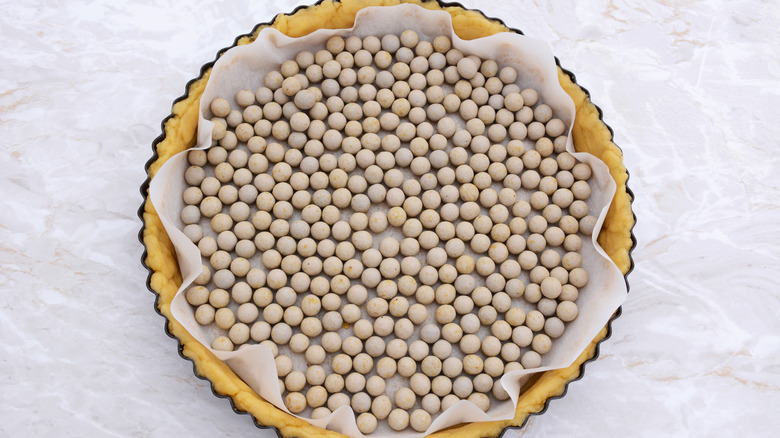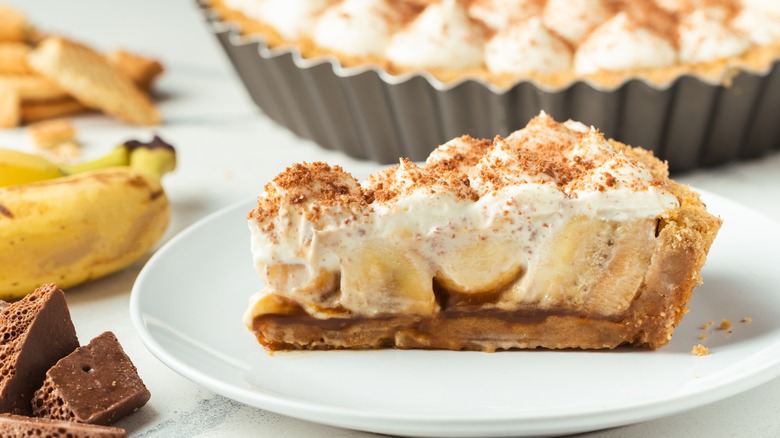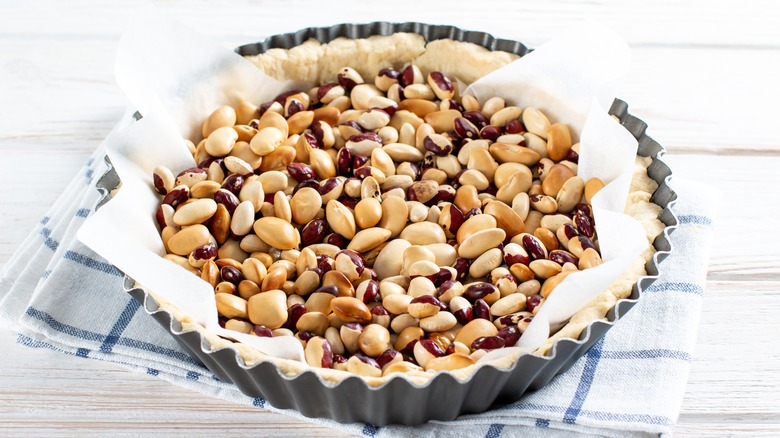The Reason You Should Avoid Ceramic Pie Plates For Blind Baking
To blind bake or not to blind bake: that is the question many of us ask ourselves before delving into the complex and delicious world of pie. Because pie crust is a complicated thing, you'll want to let it fully reach its puffy, flaky ambitions on its own in the oven (otherwise known as blind baking) before adding moisture via the filling. There are so many things that can go wrong while baking a pie, so you'll want to get out in front of crust-related issues if you can help it. In most cases, it's a good idea to blind bake your pie crust. However, it's important to pick the right dish for the task. There is one baking vessel you should avoid for blind baking your crust: a ceramic dish.
Ceramic pie dishes, albeit beautiful in presentation, aren't an ideal choice for blind baking pie crust because they don't heat up evenly, and when they do it takes forever. Why does this matter? If you've ever worked with shortcrust pastry, you'll know that slow heat conduction is the killer of flaky pastry hopes and dreams. The butter seeps out of the dough and you're left with an unhappy, flat crust. Slow bake equals no flake.
What is blind baking and why do it?
If you're unfamiliar with blind baking, it's simply an interesting way of saying partially baked or pre-baked pie crust. You don't need to do this every time, but if you're making an open-faced pie, or one with a soft, custardy filling, it's usually recommended. However, you can also blind bake for pies that have a top, and doing it correctly will result in a crunchy, flaky crust that will surely make any pie a cut above. Be sure to have a good pie crust recipe — take, for example, our favorite pie crust – because blind baking won't fix a mediocre recipe.
You'll want your pie dough to be sufficiently chilled before rolling it out and blind baking. If your pie crust dough is too warm, it will be soft and subject to butter leakage and shrinkage. The key to a good blind bake is to ditch the parchment paper and use aluminum foil. Aluminum fits the contours of your pie crust more smoothly than parchment paper, and also helps the pie crust retain its butter while baking, helping to make the crust more flaky. Aluminum is great for preventing too much browning on your crust and conducts heat evenly.
Metal is better
Ideally, you should blind bake your pie crust in aluminum tins. If you must use glass for baking, it's suggested that you use tempered glass. Metal is safer because it won't shatter; it's also lighter, easier to manage, and more efficient for baking because it conducts heat better and cools down faster. One method of blind baking is to use two aluminum tins and blind bake your crust sandwiched between both plates, placed facedown on a baking sheet. This method helps with uniformity and prevents crust slumping — a blight in which the crust basically melts and piles unevenly during the baking process.
If ceramic is all you have available, you can use it, but your blind bake may not be as successful. It's crucial that your crust be thoroughly chilled and formed before blind baking no matter what, but especially if you're going the ceramic route. At the end of the day, aluminum is the best vessel to have on hand if you're going to make a pie. So, invest in some pie tins, and remember: ceramics are for busts, not crusts.


